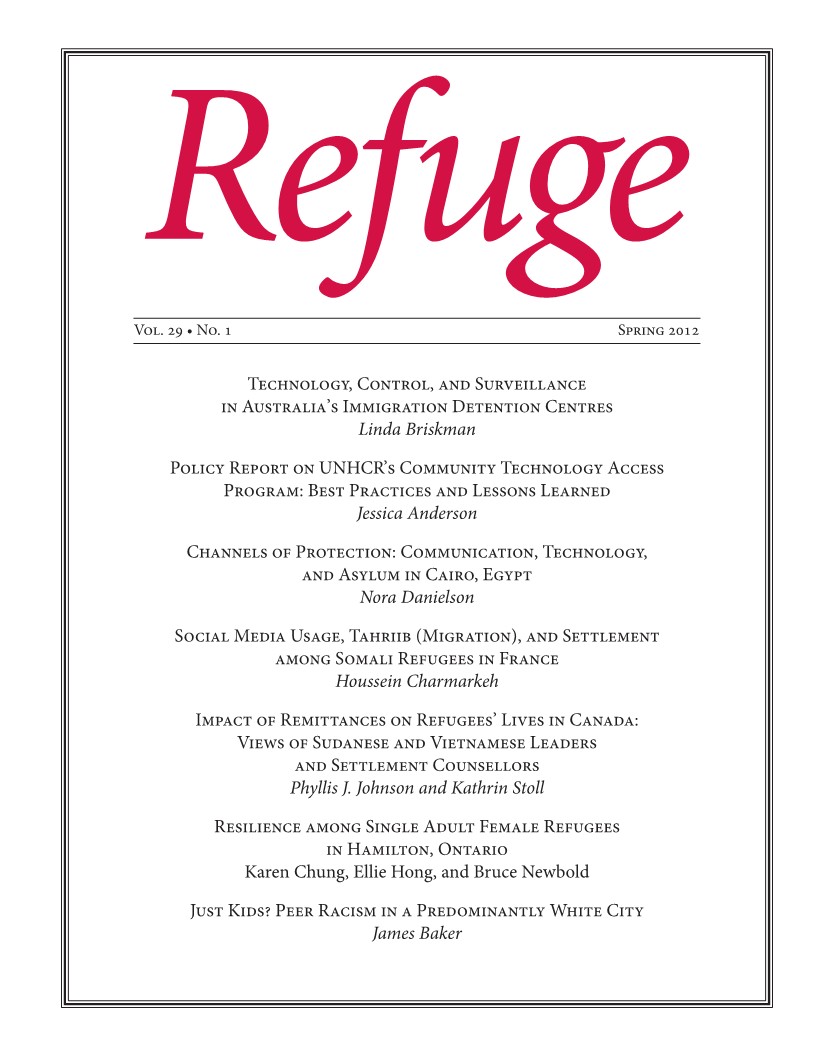Channels of Protection: Communication, Technology, and Asylum in Cairo, Egypt
DOI:
https://doi.org/10.25071/1920-7336.37504Keywords:
Cairo, Egypt, information technology, service providers, communication, forced migrants, urban asylum, urban refugee policy, community outreachAbstract
Communication between service providers and refugees about services, legal processes, and rights helps shape refugees’ experience of asylum but has, in Cairo, Egypt, been a source of misunderstandings and conflict. Based on qualitative pilot research, this paper explores the practices, challenges, and potentials of information technologies old and new in facilitating access to asylum in this southern city. Interviews with refugee and service providers and review of previous technology-based initiatives show that although service providers tend to rely on oral information transfer, other channels—print, phone, text messaging, websites, social media—hold significant capacity for growth. Existing practices and initiatives in Cairo demonstrate the potential for technology-based projects to overcome the geographic barriers of the urban setting and the range of literacy and languages in Cairo’s refugee communities. However, service providers and refugees require further funding and institutional support if this potential is to be realized.
Metrics
Downloads
Published
How to Cite
Issue
Section
License
Copyright (c) 2013 Nora Danielson

This work is licensed under a Creative Commons Attribution-NonCommercial 4.0 International License.
Refuge authors retain the copyright over their work, and license it to the general public under the Creative Commons Attribution-Non Commercial License International (CC BY-NC 4.0). This license allows for non-commercial use, reproduction and adaption of the material in any medium or format, with proper attribution. For general information on Creative Commons licences, visit the Creative Commons site. For the CC BY-NC 4.0 license, review the human readable summary.







